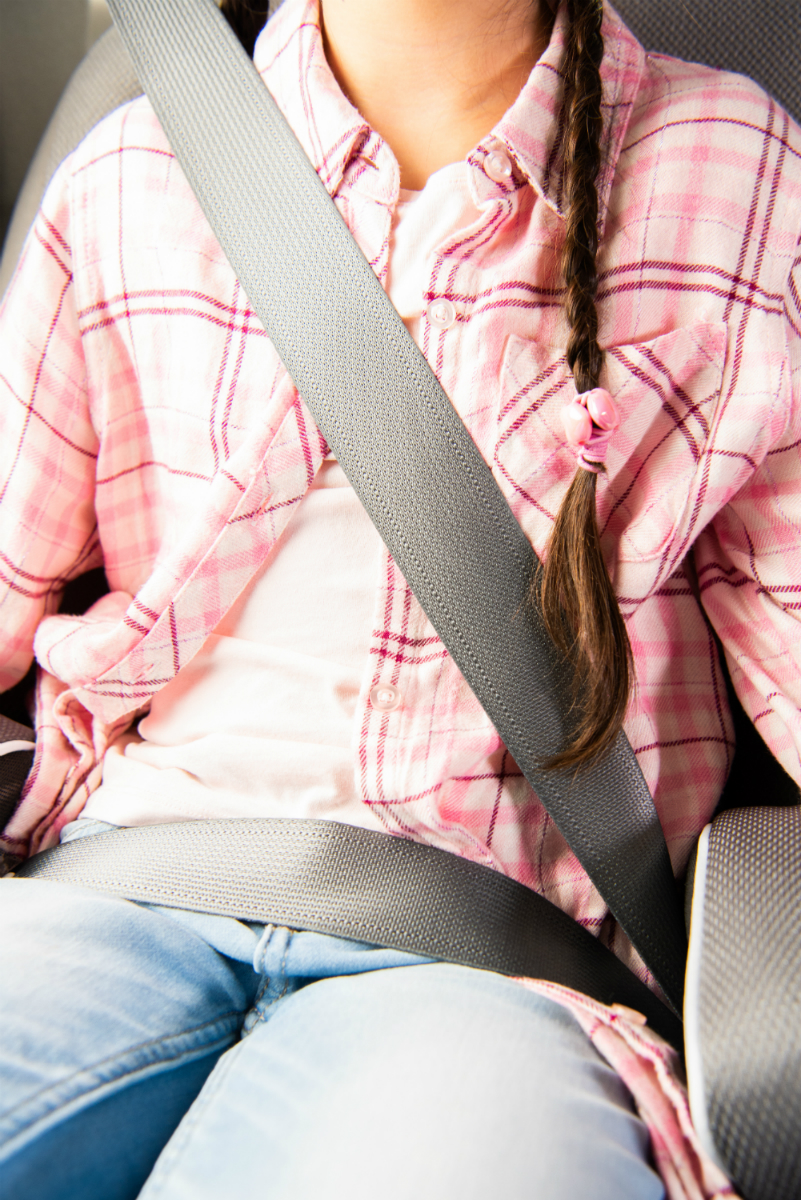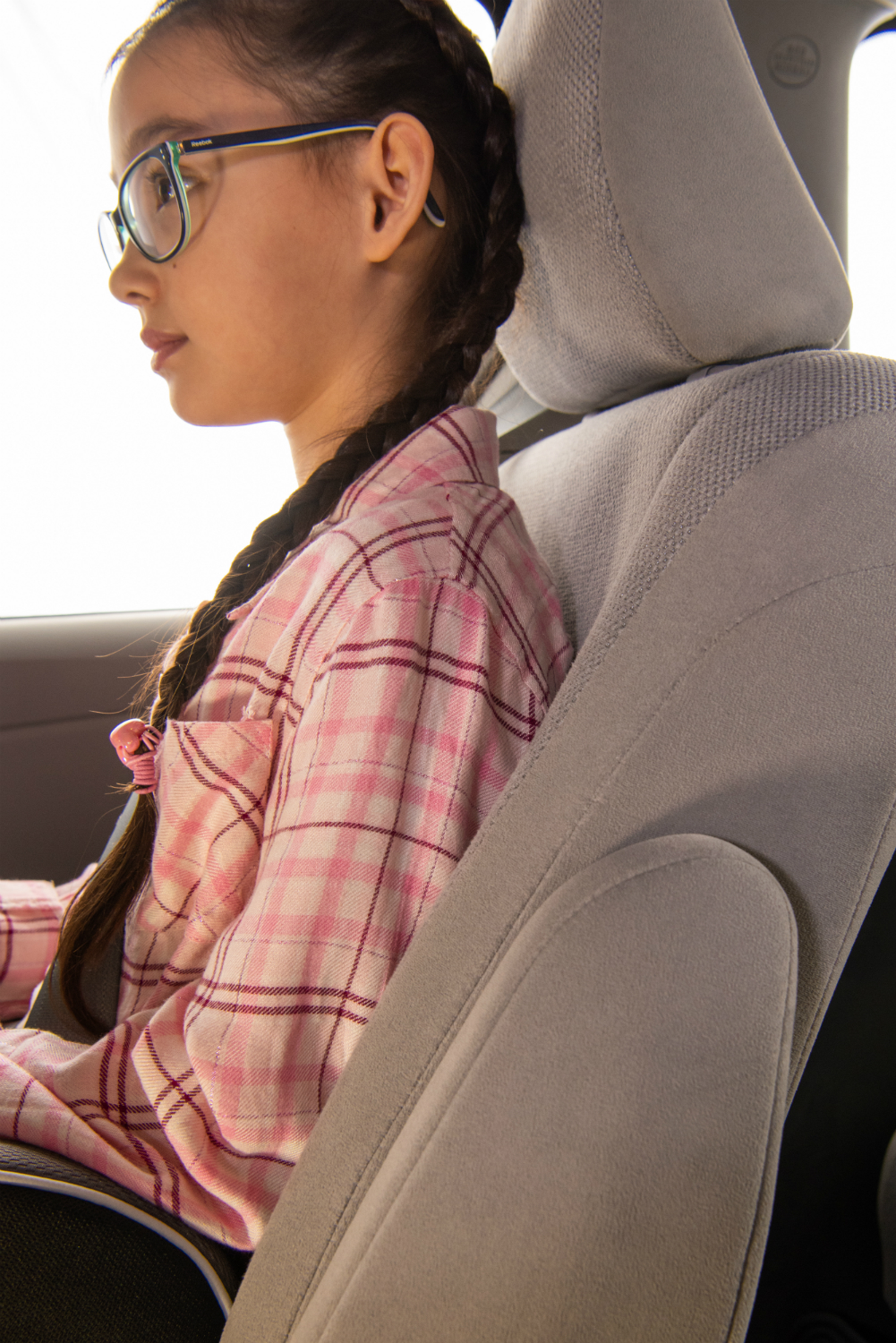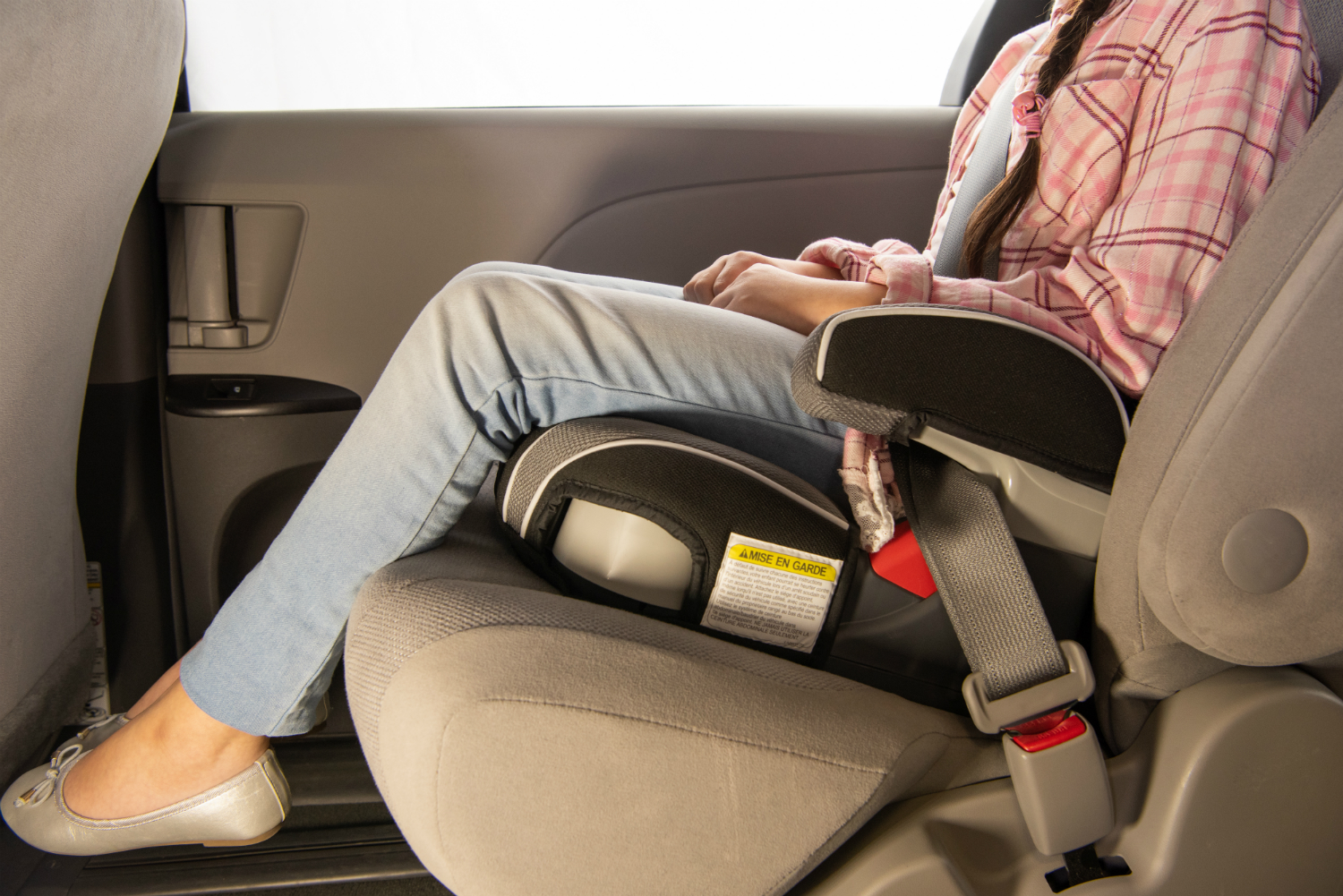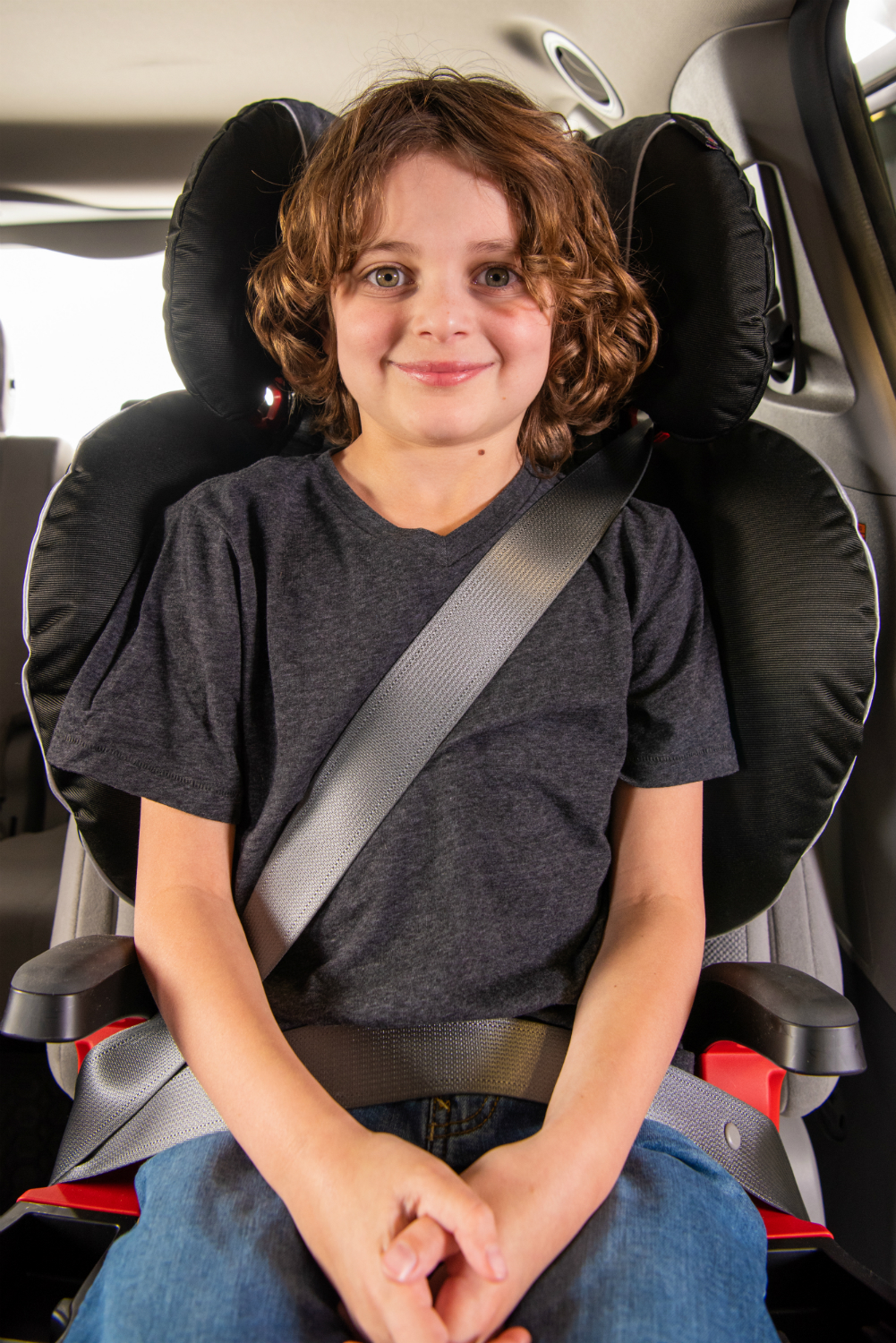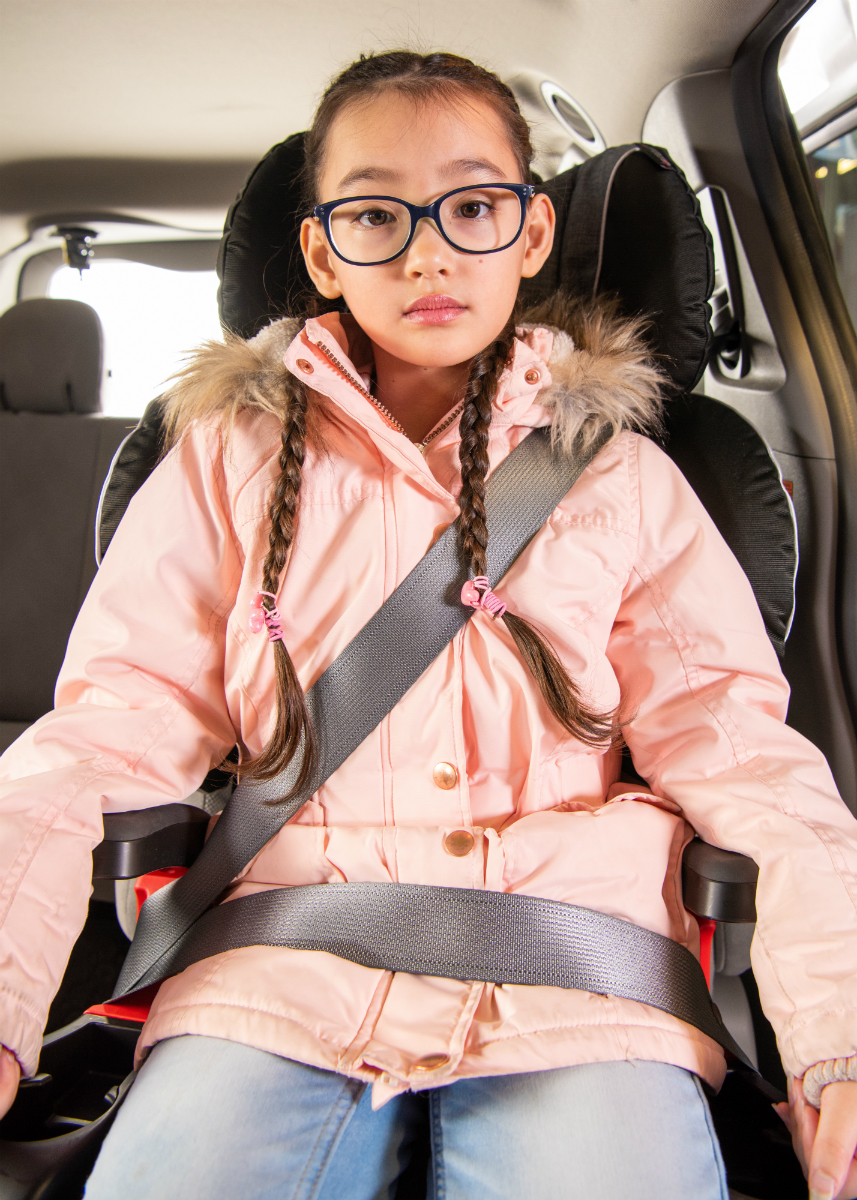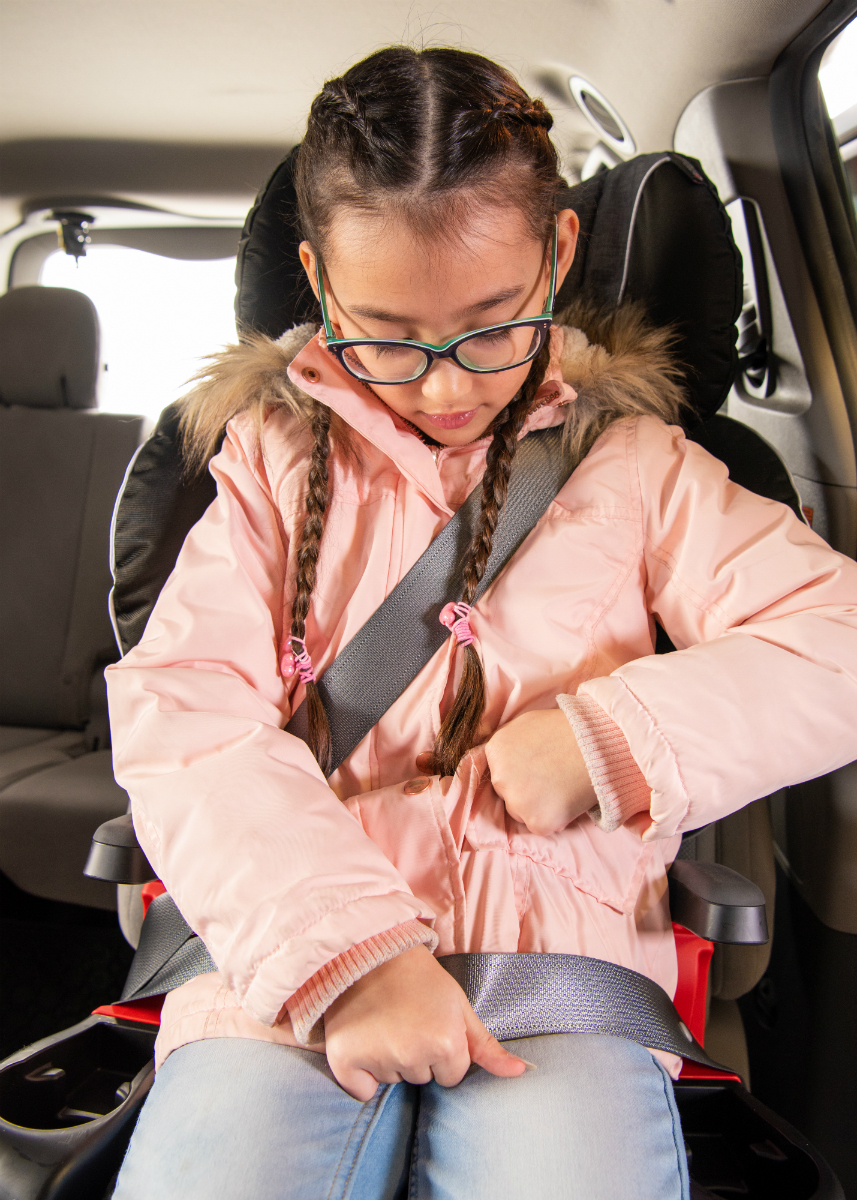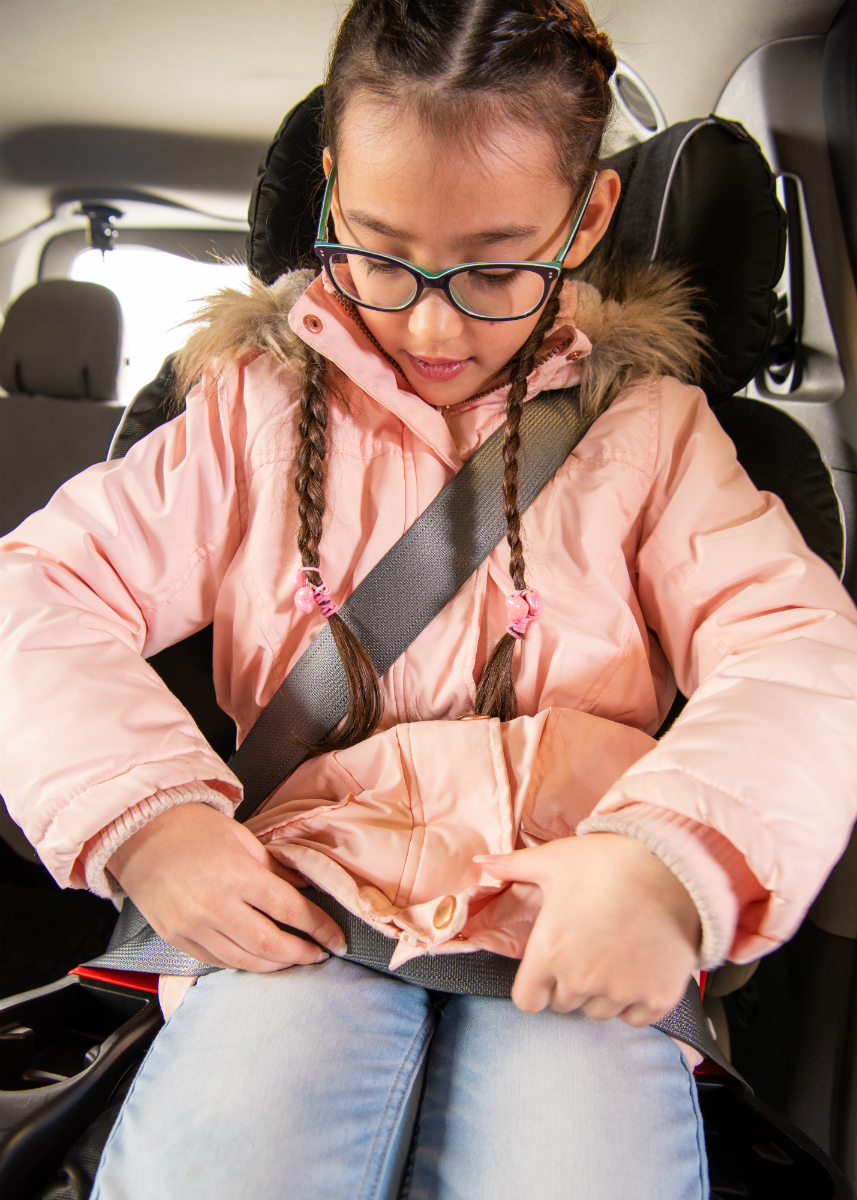Booster seats are meant for children who have outgrown their forward facing child seats and who weigh at least 18 kg (40 lb). They raise the child and help keep the vehicle’s adult seat belt where it needs to be, to help protect your child.
Don’t transition to this important stage unless you are sure:
- your child has outgrown their child car seat, and
- the regulations in your province allow it
On this page
- Checking the fit of the booster seat
- When to move your child from a booster seat to a seat belt
- Contact Motor Vehicle Safety
Checking the fit of the booster seat
Even if a booster seat meets Canadian regulations, the seat you choose needs to fit your child, and your vehicle. A booster seat that fits will better protect your child during a sudden stop or a crash.
The lap belt must fit snuggly on the hips. This will help the seat belt bring your child to a stop during a sudden stop or crash and helps protect your child from injuries.
The shoulder belt should sit in the middle of your child’s shoulder because:
- this is most comfortable for your child
- this makes it less likely for your child to wiggle out of the belt or put it behind him or her
- this makes the belt less likely to slip off your child’s shoulder during a sudden stop or crash
Try the booster seat in your vehicle before you buy it, if possible. Otherwise, ensure that the seat can be returned if it does not fit your child and your vehicle.
Check provincial or territorial regulations to make sure that your child meets the age, height and or weight requirements for a booster seat.
Checking the fit in your vehicle
Read the booster seat manual and the section of your vehicle user manual that describe how to install child seats and booster seats.
Always install the booster seat in the back seat of your vehicle. This places your child away from your vehicle’s front air bags.
If your booster seat has a backrest make sure the booster seat fits against the vehicle seat back with little to no gaps:
- if it doesn’t, you can raise or remove the vehicle head restraint to clear the top of the booster seat
- if this doesn’t help, choose another booster seat
If your booster seat does not have a backrest, make sure that the vehicle seat or headrest is high enough to reach at least the top of your child’s ears. This important support will help protect your child’s head and neck in a crash.
- If the vehicle seat back and head rest are not high enough, raise the head rest
- If this doesn’t help, choose another booster seat, such as a high back booster seat
There may be a child car seat clinic in your community that can help you determine if you have correctly installed your booster seat.
Buckling up your child
A booster seat helps children sit comfortably by raising them so they can sit up against the seat back with their knees bent over the edge of the booster or vehicle seat.
If your child can sit up straight with his or her back against the seat back and his or her knees bent over the edge of the booster, move on to check the fit of the seat belt.
- If your child cannot do this, choose another booster seat
A booster seat that fits needs to guide and keep the lap and shoulder belt in place across your child’s hips, chest and shoulders.
The seat belt guides help you adjust the belt for better fit, and help keep the belt in place. Follow the instructions in the booster seat’s manual and the seat’s labels for threading the belt through the guides.
The lap belt must fit snuggly on the hips. This will help the seat belt bring your child to a stop during a sudden stop or crash and protect your child from injuries.
- If the lap belt does not sit flat on the hips, choose another booster seat
The shoulder belt should sit in the middle of your child’s shoulder. This is most comfortable, and makes it less likely for children to wiggle out of a belt or put it behind them. It also makes the belt less likely to slip off the shoulder during a crash.
- If the shoulder belt does not cross the middle of the shoulder try to adjust the shoulder belt guide
- If this does not help, choose another booster seat
Checking to make sure the seat belt stays in place
With your child in the booster seat and the seat belt fastened:
- pull out about 15 cm (6 inches) of the shoulder belt to give it some looseness, and
- ask your child to move their bottom forward and lean forward into the shoulder belt until there is no looseness
If the shoulder belt crosses the middle of the shoulder and the lap belt is snug against the front of the hips, your booster seat fits! If it doesn’t, choose another booster seat.
Note: Young children who are new to booster seats can benefit from having the seat belt locked in place. You can usually do this by pulling the seat belt out until you hear the ratchet engage, then slowly let it rewind until it is snug. This prevents the belt from becoming too loose if your child wiggles in the seat. Show older children how they should snug up the belt if they notice it has become less snug.
Don’t forget:
- Always use both the lap and shoulder belt with a booster seat
- Never allow your child to travel with the shoulder belt behind his or her back
- Never install a booster seat in a seat location that has only a lap belt
- Always buckle up an empty booster seat or take it out of your vehicle
- A loose seat and other loose items could hurt someone in a crash or if you stop suddenly
- If your child is wearing bulky winter clothing, try to thread the lap belt underneath the jacket so that the lap belt is tight on the hips
When to move your child from a booster seat to a seat belt
Children should continue to use their booster seat until they have outgrown the seat’s weight and or height limits shown on the seat’s instruction labels.
Many booster seats today have removable backrests. Removing the backrest allows your child to benefit from the protection of the booster seat for a little longer. Before you get rid of the booster seat, check how your vehicle’s adult seat belt fits your child.
Stage 4: seat belts has more information on using adult seat belts without a booster seat. If your child grows out of their booster seat before being ready to use a seat belt only, shop for a different booster seat that fits your child and your vehicle.
Contact Motor Vehicle Safety
Telephone: 1-800-333-0371 (toll-free), 1-613-998-8616 (Ottawa region)
Email: mvs-sa@tc.gc.ca
